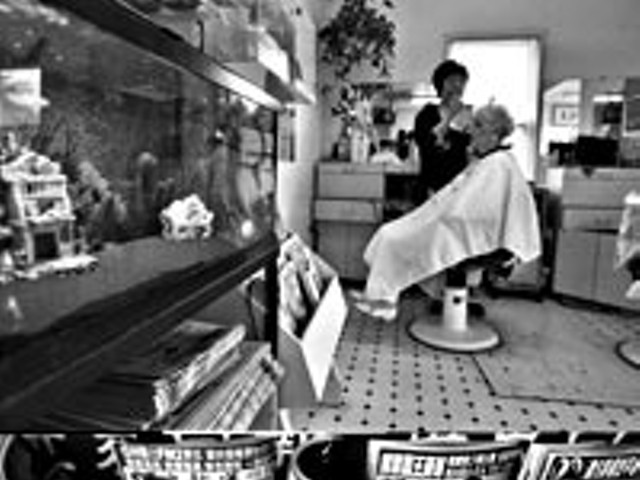Maheras-Gentry Park, off Clairpointe Street between Jefferson and the Detroit River, is a far cry from some of the neighborhoods that sully Detroit’s reputation. The 52 acres of prime riverfront land has been fought over for more than four decades.
Dust and construction equipment intrude right now, but in time Maheras-Gentry Park will boast five ball diamonds, three soccer fields, walkways and a large fish habitat. The park already has horseshoe pits and a recreation center with a pool and weight room.
A June 8 parade will celebrate the reconstruction of what was originally dubbed Algonquin Park in 1928.
The homes that surround the park are diverse. Within a matter of blocks, housing values range from $4,000 to $500,000. The most expensive houses border the park and the Grayhaven Mooring Facility. It may look more like Novi, but the neighborhood is decidedly Detroit.
Bronson Gentry, 77, has fought against business and residential development of the park since 1959.
“I always go down there to watch the boats go down the river. This park has such a great view,” says Gentry.
From the 1940s until 1997, the park was known as Maheras Park/Playfield, named for Peter Maheras, an area soldier who died in World War II. The park was then rechristened, adding Gentry’s name in honor of his dedication to its preservation.
The near completion of the park is a source of pride for him.
“I feel great; it means the city and developers cannot get that park,” says Gentry, who lives on Tennessee Street in the house where he was born and raised. He’s never wanted to live anywhere else: “Everything I like to do is right here.”
Gentry says he’d also like to see a covered swimming pool that could be used in the winter.
According to Gentry, the park is busiest during the Freedom Festival, when about 10,000 people converge to watch fireworks. But he’s most eager for the Clairepointe-Tennessee-Conner Annual Old Timer’s Event on July 27. Gentry says more than 2,000 present and past residents of the community come to the affair.
A group called Think Detroit is building the fields; it provides athletic leagues for more than 3,000 area youths each year. The organization included $15,000 in its 2002 budget to pay for mowing, fertilization and other park upkeep.
About $750,000 has gone into the reconstruction, the money coming from donors such as Major League Baseball, General Motors Corp., Comerica Bank and Kmart.
Detroiter Kim Parker says the riverbank at the park has been “her spot” for more than four years.
“I like it because it’s peaceful,” she says, adding that that the beautification process could backfire.
“The construction is OK because it makes Detroit look good,” she says, “but it could bring in too many people and it may possibly become an issue for park lovers.”
Resident Peg Roberts says the new development is the best thing that could happen to the area. “It was usable but it wasn’t quality, the way we want,” she says. “People went there and we participated in the park, but it wasn’t the same kind of quality we are going to provide for the kids in the neighborhood. This is state of the art. Think Detroit is just an incredible organization that is providing athletics for people citywide. The park is just such a phenomenal project.”
Roberts’ 13-year-old son Joshua plays in Think Detroit’s baseball and soccer leagues.
“I live a few streets away so I go there pretty often,” Joshua says. “I like that it’s close to the water and my dad sails, so sometimes I sit there and I have a remote control boat and I use that.”
Mike Tenbusch, executive director of Think Detroit, says the organization has been involved with Maheras-Gentry Park for two years.
“Major League Baseball was interested in making the very best improvements to one park instead of just good improvements to many parks,” he said. “This was the perfect place because of the access to the river area and the number of kids without a lot of opportunities.”
August 3 marks the Think Detroit Baseball championship game, which will be played in Maheras-Gentry Park. More than 1,200 kids aged 5-18 belong to the baseball leagues.
“There are kids within one mile of the riverfront that don’t get to spend time here,” Tenbusch says. “East side youth were kind of sold out in terms of serving organizations because there wasn’t enough money for corporate support.”
Return to the introduction of this special Metro Times Summerguide 2002 neighborhood profile. Megan Frye is an editorial intern at Metro Times. E-mail [email protected]





